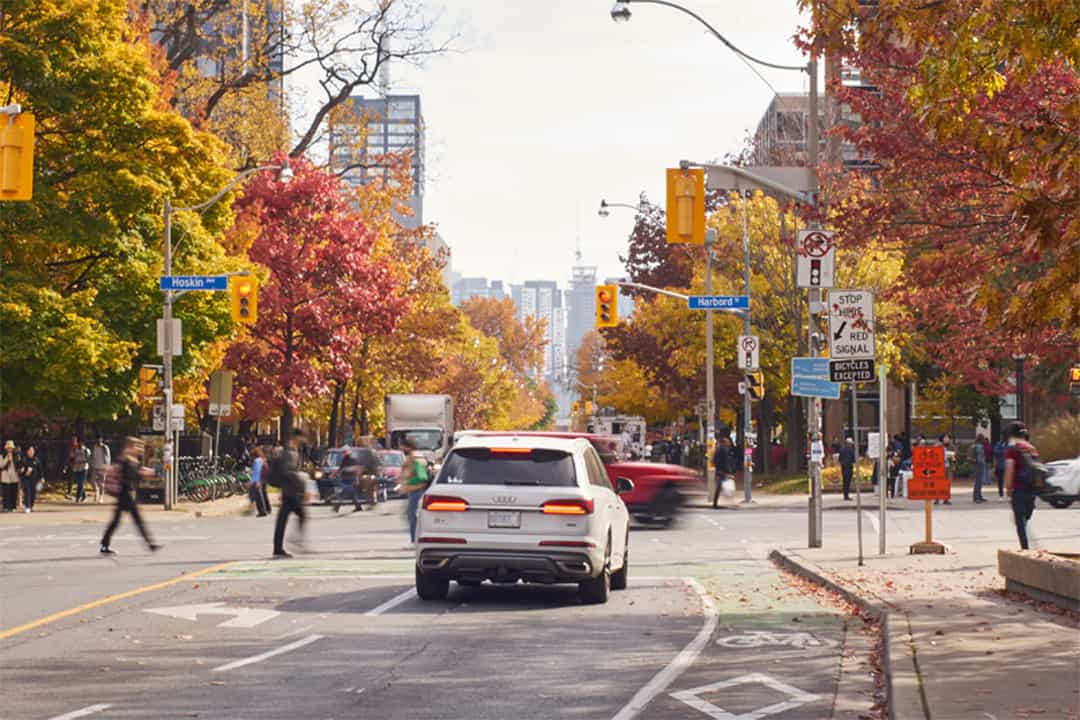I’m sure that like myself, most students are frustrated with the pedestrian crossings at UTSG — in particular, the ones on St. George Street. With a subway station, libraries, and residences, there’s no question that St. George is the most important street on campus. As the connecting street between College and Bloor, St. George Street is also a crucial artery to campus. However, it’s been polluted with bumper-to-bumper traffic during the day and careless speeders at night. This poses a threat to pedestrians.
In 2012, U of T became more pedestrian friendly by transforming a portion of Willcocks Street into Willcocks Common. This pedestrian-only zone between Huron and St. George opened up the possibility for renovation alongside the Spadina area of campus so that Willcocks Street could become a mix of both pedestrian-only and pedestrian-friendly spaces.
The Willcocks pilot project was completed about eight years before my enrolment at U of T, so I can’t attest to the issues the street posed before a section of it was closed off to cars. However, I can vouch for the fact that it is a much nicer part of campus to walk on: controlled speeds for cars, bustling student life with people socializing and eating on the tables outside. Furthermore, desire paths, a convenient human-made shortcut that avoids inefficient sidewalk paths, also exist alongside the Spadina vicinity of campus.
St. George Street, however, is an embarrassing disaster. I should not have to wait for two minutes or longer to cross the street if I miss the light indicating to cross, which only lasts about 10 seconds. I also should not have to worry about almost getting hit by a car while crossing the street, a phenomenon that has happened to me much too often.
With cars making speedy right turns, impatient left turns, and flying through red lights, the major intersections around campus are too dangerous. Don’t get me started on the mufflers and honking that can be heard from the highest floors of Robarts Library.
With only ten minutes between some classes, students often have to run across campus to make it to class on time. With this in mind, the poorly planned pedestrian crossings at UTSG can force students into potentially lethal situations.
The fate of cyclist collisions also rests in the university administration and the City’s hands. The attempt at a designated bike lane on St. George is pathetic. In fact, painted bike lanes are more dangerous than no bike lanes at all. Sharing the road with large high-speed vehicles with no protective barriers is a massive safety oversight from the university. Calling for better roads, specifically to accommodate cyclists, has been a longstanding proposal from students. Back in 2014, the University of Toronto Students’ Union was unsuccessful when they petitioned the university administration and the City of Toronto for the pedestrianization of St. George Street.
Realistically, what can be done? In the 2021–2022 academic year, undergraduate and graduate student enrolment at UTSG recorded a whopping 65,617 students, but the city lacks space to accommodate this large number of students walking to class. St. George Street being closed to vehicles, or at least working toward becoming more pedestrian friendly, would allow more room for students in general as some parts of the sidewalk are extremely narrow and outdated.
Do I myself have a resolution? No, not really. That’s not my job. However, as U of T continues to welcome more students and Toronto’s downtown core keeps expanding, the university administration and the City of Toronto need to prioritize students’ safety. We belong on this campus. We pay thousands of dollars a year to go to school here. U of T and the City of Toronto owe it to us to provide safe and walkable roads.
Emily Carlucci is a second-year student double majoring in political science and English at Trinity College.


